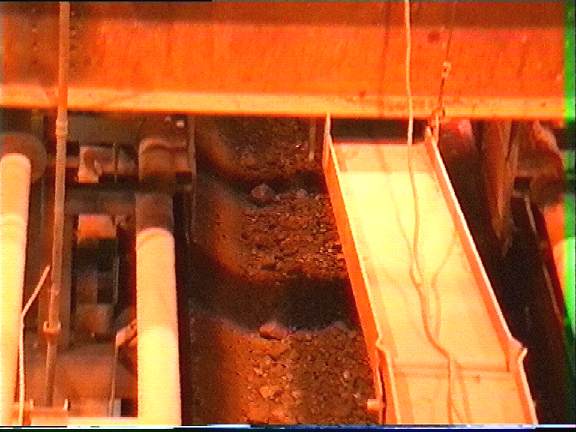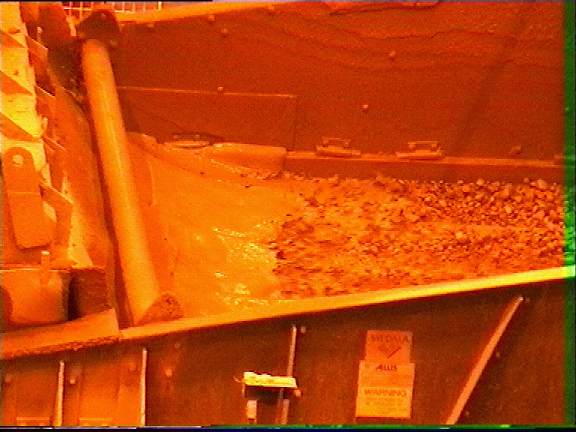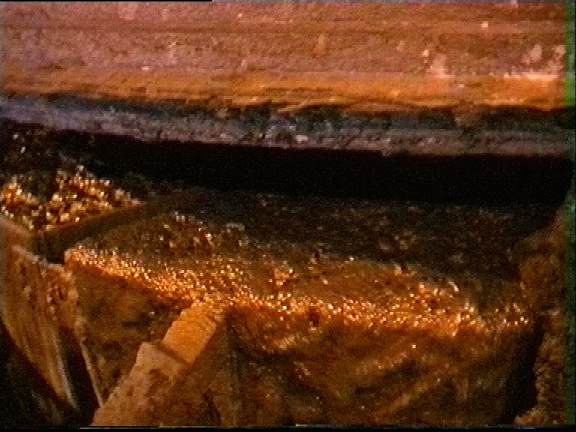Processing Ore

This is the real stuff sought for: the blue specimen is not characteristic
for the seven kinds of ores found at Ok Tedi Mine. The sulfides are partly
oxidized, because it has been exposed to air. The "golden" sample, copper
pyrite, is regularly found here.

Rock containing copper is coarsly broken and conveyed to the mill.

The coarsely broken ore is pulverized in huge rotating mill drums, that
contain steel balls of tennis ball size.

Pieces that remain too large are recycled to the input, till they are broken
down to less than 170 micrometers in diameter, and ready for flotation.
Flotation means, the slurry is foamed with air. Bubbles are adsorbed to
ore particles, so that they are rised from the exhausted slurry. To enhance
effectivity, chemicals are added,
lime: calcium hydroxide, the main additive to adjust pH
S-7249 Promoter: main compound sodium diisobutyldithioposphate
Oreprep OTX-140: a mixture of alcohols, aldehydes, esters, and glycols
Magnafloc 1011: an anionic polyelectrolyte flocculant

A foaming flotation pot

The flotation hall
On a normal day of production, 85,000 tons of ore enter the mill. Depending
on the type of ore, yields range from 50% (very difficult scarne ores)
up to 85% of copper-content. By flotation, 2000 tons of ore concentrate
are gained, that contain 600 tons of copper. 83,000 tons of residue, called
the "tailings", are discharged into Ok Mani, and thus to Ok Tedi and Fly
River. The tailings include 120 tons of copper. Besides the mere physical
impact, contamination of environment may occur by mobilisation of copper,
to make it bioavailable.
Original issue April 2001
last update
 milling
movie milling
movie
 Kiunga
River Port Kiunga
River Port
 Index
of Ok Tedi pages Index
of Ok Tedi pages
 back
to Homepage back
to Homepage
|










 rettet-die-elbe.de
rettet-die-elbe.de
